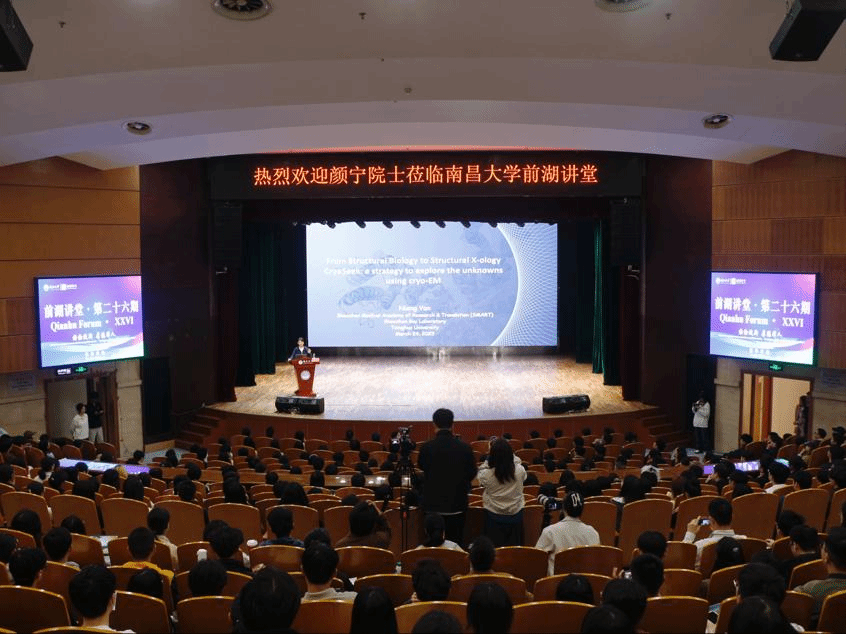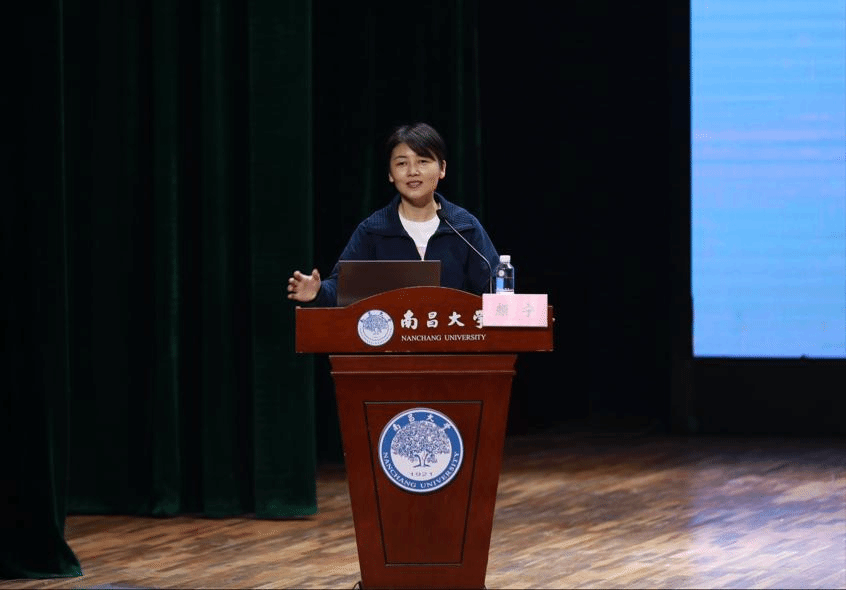
On the morning of March 24, Academician YAN Nieng of the Chinese Academy of Sciences delivered an academic lecture titled “From Structural Biology to Structural X-ology CryoSeek: A Strategy to Explore the Unknowns Using Cryo-EM” at the 26th Qianhu Forum hosted by Nanchang University (NCU).

During her lecture, Academician YAN began by posing two fundamental questions: “How do we comprehend the world?” and “Does structure determine function?”. She then highlighted her systematic research on the alternating-access cycle of glucose transporter proteins and the structural biology and pharmacology of voltage-gated sodium channels. Additionally, she encouraged the young students in attendance to maintain intellectual curiosity about the unknown and to preserve their passion for scientific inquiry, which are essential drivers for reaching new heights at the frontiers of innovation.
Following the lecture, students raised several questions about career and academic challenges. Some asked, “How can I determine if a newly identified research field is suitable for me?” and “How is a drug developed, and what role does structural biology play in this process?”. Drawing from her own scientific journey, Academician YAN offered candid advice to all attendees. This event not only shared cutting-edge knowledge with faculty and students of NCU but also served as an inspiration to support their scientific careers.
Attendees included faculty and students from the School of Life Sciences, School of Basic Medical Sciences, School of Pharmacy, First Clinical Medical School, Second Clinical Medical School, and Fourth Clinical Medical School of Nanchang University.
YAN Nieng, Academician of the Chinese Academy of Sciences and professor at the School of Life Sciences at Tsinghua University, is currently the president of Shenzhen Medical Academy of Research & Translation (SMART) and the Director of Shenzhen Bay Laboratory (SZBL). Her primary research interest is in the structure and mechanisms of transmembrane transport proteins. She was the first to reveal the atomic-resolution structures of a series of transmembrane proteins with significant physiological and pathological relevance, including human glucose transporters, eukaryotic voltage-gated sodium channels, and calcium ion channels, which have provided a molecular basis for understanding the pathogenesis of related diseases and for drug development.Her current research program focuses on the study of pain pathogenesis and the development of drugs for pain relief.
Editors: Xu Hang, Tu Jinfeng, Zhu Wenfang